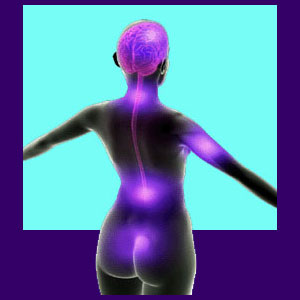
A rheumatologist is a doctor who specializes in the diagnosis and treatment of injuries and diseases of the joints and connective tissues of the body. Rheumatic conditions are some of the most common and universal health concerns in the world.
There are many conditions studied by rheumatological physicians, but the 2 most common are the various forms of arthritis and the various conditions now known as fibromyagia. Unfortunately, in patient satisfaction ratings, these types of care providers lag far behind many others. This may be well in part due to the lack of cures for virtually every condition treated, as well as the undesirable focus on purely pharmaceutical therapy.
Rheumatologists and Arthritis
Arthritis is the bread and butter for most rheumatological doctors. There are so many individual types of arthritis including: rheumatoid, osteo, septic, psoriatic, reactive, gouty, ankylosing spondylitis and others. When it comes to back pain, arthritis is often a benign condition that is experienced by almost everyone as they age. Arthritis is rarely the primary cause of severe chronic or acute back ache. However, the diagnostic nocebo effect has made arthritis one of the most commonly diagnosed scapegoats for unresolved back pain.
Remember, there is no cure for the condition, only symptom management. This type of ongoing care is not very satisfying to the patient and often comes at great health risk, particularly when it involves hazardous pharmaceutical products used long-term.
Rheumatologists and Fibromyalgia
Fibromyalgia is a mysterious condition that has puzzled medical science for decades. The condition is actually a conglomerate of previously named and separately diagnosed musculoskeletal pain syndromes including: fibrositis, myofascial pain, myofibrositis, fibromyositis, muscular rheumatism, tension myalgia, rheumatic myositis or myofasciitis. Fibromyalgia has reached epidemic proportions and no universally effective treatment is in use or even in sight.
Rheumatological doctors have taken the lead in the fight against fibromyalgia. There has been considerable argument over the actual cause of this condition and even more fighting over how to treat it. The majority of all medical treatments for fibromyalgia revolve around pharmaceutical and hormonal therapies. This is typical of modern medicine; If you can’t figure out how to identify the true cause, simply drug up the patient and hope it helps (or at least shuts them up). It is a crime that creates multitudes of drug dependent sick people every year.
I am sure the physicians of the future will look back and recognize that medical treatment of fibromyalgia patients is nothing short of illogical, barbaric and uninformed.
Opinion of Modern Rheumatology
My biggest problem with many of these doctors is the simple fact that they often do not draw the line between normal conditions associated with aging and/or usage, and conditions that are harmful and inherently painful. This is a huge concern in medicine and is especially prevalent in the back pain industry.
The nocebo effect caused by diagnosis of many arthritic conditions ruins the quality of millions of lives every year. If I sound like a strong critic of rheumatological physicians, it’s because I am. I admit it. I feel that many are simply out of touch with the reality of many of the conditions they treat.
There is considerable well known and documented information concerning rheumatic pain syndromes that is arbitrarily ignored by the very doctors who most often treat the conditions. It is bordering on criminal in some cases.
I do not mean this page to be an assault upon a particular type of doctor. I defer back to my usual statement that most doctors do try hard to help and that most do have good morals, ethics and intentions. However, as a group, this particular type of doctor has dropped the ball.
Is this just my judgment? Absolutely not! It is merely an objective view of a profession that has allowed its prime conditions to grow out of control and ruin the lives of patients worldwide. In fact, it is your actual patient stories which have shaped this editorial opinion.




